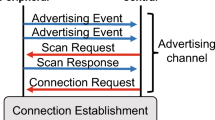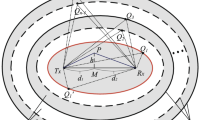Abstract
Efficient, quick and reliable spectrum sensing in consonance with maximum throughput is required at the cognitive radios to achieve maximum utilization of the network. In cognitive radio environment, the intelligent secondary users shall effectively sense the presence of primary user signal to avoid interference, in order to achieve maximum operational feasibility. A cooperative sensing scheme using Kullback Leibler divergence with higher throughput and lower sensing time to avail and identify the underutilized frequency spectrum is presented in this paper. The optimized sensing scheme utilizes the log-likelihood ratio estimated at the secondary user during each sensing instance, with fusion centre acquiring and assimilating this information to estimate the likelihood of spectrum availability. The optimized scheme is implemented in a robust manner assuming the signal and noise are gaussian distributed. Simulation results highlighting the competitive edge of the proposed scheme, with higher throughput over various false alarm probability and signal to noise ratio are presented.














Similar content being viewed by others
References
SpiderCloud Wireless. (2013). Poor in-building coverage leaves valuable licensed spectrum under-utilized. Press release.
Quan, Z., Cui, S., & Sayed, A. H. (2008). Optimal linear cooperation for spectrum sensing in cognitive radio networks. IEEE Journal of Selected Topics in Signal Processing, 2(1), 28–40.
Akyildiz, I. F., Lee, W., Vuran, M. C., & Mohanty, S. (2006). Next generation/dynamic spectrum access/cognitive radio wireless networks: A survey. Computer Networks, 50, 2127–2159.
Nekovee, M. (2010). A survey of cognitive radio access to TV white spaces. International Journal of Digital Multimedia Broadcasting, 1–11 (Article ID 236568).
Haykin, S. (2005). Cognitive radio: Brain-empowered wireless communications. IEEE Journal on Selected Areas in Communications, 23(2), 201–220.
Mitola, J, I. I. I., & Maguire, G. Q. (1999). Cognitive radio: Making software radios more personal. IEEE Personal Communications, 6(4), 13–18.
Matsui, M., Shiba, H., Akabane, K., & Uehara, K. (2007). A novel cooperative sensing technique for cognitive radio. In Proceedings of the IEEE 18th international symposium on personal, indoor, mobile radio communications (PIMRC), (pp 1–5).
Furtado, A., Irio, L., Oliveira, R., Bernardo, L., & Dinis, R. (2015). Spectrum sensing performance in cognitive radio networks with multiple primary users. IEEE Transactions on Vehicular Technology, 65, 1564–1574.
Liang, Y. C., Zeng, Y., Peh, E. C. Y., & Hoang, A. T. (2008). Sensing-throughput tradeoff for cognitive radio networks. IEEE Transactions on Wireless Communications, 7(4), 1326–1337.
Unnikrishnan, J., & Veeravalli, V. V. (2008). Cooperative sensing for primary detection in cognitive radio. IEEE Journal of Selected Topics in Signal Processing, 2(1), 18–27.
Wald, A. (1947). Sequential analysis. New York: Wiley.
Wald, A. (1944). On cumulative sums of random variables. The Annals of Mathematical Statistics, 15(3), 283–296.
Author information
Authors and Affiliations
Corresponding author
Additional information
Publisher's Note
Springer Nature remains neutral with regard to jurisdictional claims in published maps and institutional affiliations.
Rights and permissions
About this article
Cite this article
Manimegalai, M., Bhagyaveni, M.A. A Method to Enhance the Throughput of Cognitive Radio Network Using Kullback Leibler Divergence with Optimized Sensing Time (KLDOST). Wireless Pers Commun 109, 1645–1660 (2019). https://doi.org/10.1007/s11277-019-06643-0
Published:
Issue Date:
DOI: https://doi.org/10.1007/s11277-019-06643-0




